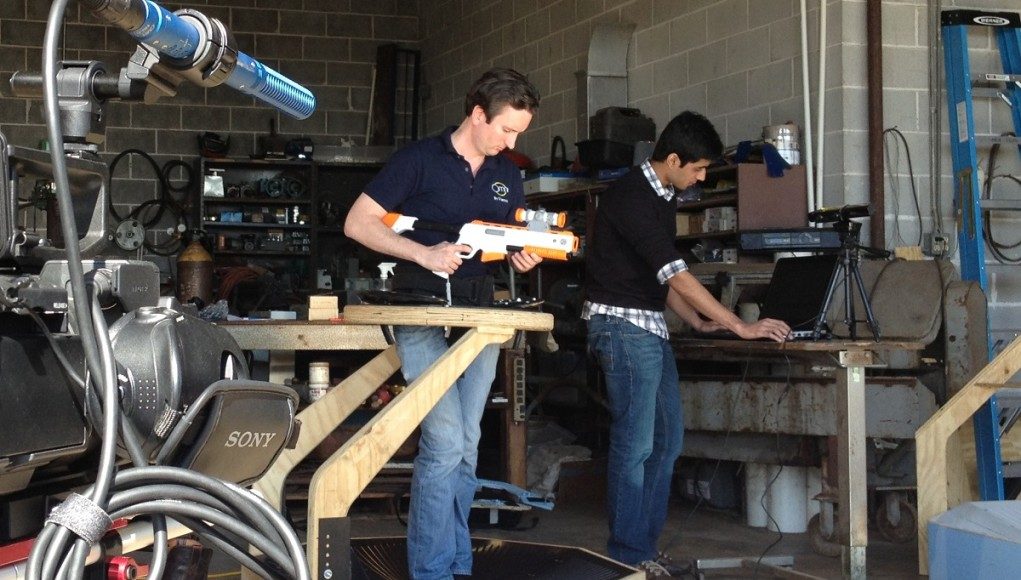How the Virtuix Omni Works
Omnidirectional treadmills are not a new concept — there are patents that go as far back as 1996. There are many examples of protoypes, but for the most part they are huge, complicated, and prohibitively expensive. A ‘passive’ omnidirectional treadmill throws the complicated moving parts out the window which simplifies cost and complexity significantly.
The folks at Virtuix came up with smart design which enables a wide range of motion in a passive omnidirectional treadmill that could be suitable for users in the home. Virtuix CEO Jan Goetgeluk told me about how the team approach the design:
The Omni is the result of more than a year of researching, experimenting, and prototyping. We explored every possible locomotion concept, ranging from active devices with motors and belts to passive devices with ball bearings. Ultimately, we realized that passive devices are the only affordable option for consumers. More so, the Omni does not have any moving parts, allowing us to keep the cost down. The difficulty is to make an affordable, passive omni treadmill that allows you to mimic a natural gait. We believe we have cracked that formula with the Omni.
The Virtuix Omni has a low-friction concave dish at its base, similar to the WizDish, which has grooves that guide a special shoe to achieve a natural gait.
Virtuix shared with Road to VR some early concepts of the Omni shoe which has a pin on the bottom that slides into the grooves. The pin is smartly designed as a plunger so that if you don’t land directly in the grooves it will push into the shoe until it is in the right position.
“Most people need about 5-10 minutes to get fully used to the Omni, but after that period of getting accustomed, you are walking freely and naturally, and your brain thinks the same,” said Goetgeluk.
Gaming with the Virtuix Omni
Below you can see an early prototype of the Virtuix Omni used with Crysis Warhead (Crytek Budapest, 2008) and tracked with the Kinect:
Fortunately the Kinect won’t be a necessary add-on for the Virtuix Omni (though the software will support it).
The best experiences are likely to be those tailored specifically to the Omni. With that said, the company plans to be able to unofficially adapt the Omni to any game through their software that will emulate keyboard presses and mouse movements based on the real movement of the player.
Goetgeluk tells me that, “the experience of playing games with the Omni is unparalleled.” I absolutely hope that the Omni lives up to those words and I can’t wait to try it myself .
Expect more info soon with the Virtuix Omni Kickstarter due out next month. We’ll be watching this one carefully.
In the meantime, you can see updates from Virtuix at the company’s Facebook page and Twitter feed.









